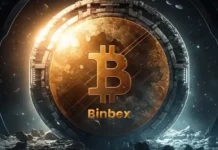The transfer of cryptocurrencies has revolutionized the way money is transferred across borders. By leveraging digital technologies, funds can now be securely and quickly sent anywhere in the world without having to worry about local interbank charges or exchange rates. Moreover, fees for cryptocurrency transfers are generally uniform regardless of origin or destination, allowing users far greater control over their finances than they would experience with traditional banking systems. Through this cost-efficiency and improved security, crypto transactions have provided more convenience as well as financial inclusion by offering access to vastly larger Audiences than those who previously could not afford it. So, if you are planning to trade or mine Bitcoin, then you should check how you can trade cryptocurrency safely
About Crypto Network Fees
Crypto network fees are similar to transaction costs, but unlike traditional payments, these fees must be paid for every crypto-based purchase or exchange. Crypto miners receive the fee as a reward and incentive for mining transactions and validating them on the public ledger – essentially powering cryptocurrencies like fuel powers an engine. Fees can vary depending upon different factors such as the type of crypto used in the transaction and its size among others. These fees are utilized for a variety of functions inside the cryptocurrency ecosystem:
- Blocking Fraudulent Activities: Transaction charges are meant to stop undesirable actors from flooding the system with several low-value transactions or even carrying out some other kinds of abuse. By imposing a fee for every transaction, it becomes economically impractical to carry out such projects on a big scale.
- Prioritising Transaction Processing: Fees are often utilized to prioritize transactions if the network goes through increased transaction volume. could set individual may fees to motivate miners/validators to prioritise their transactions, leading to quicker confirmations as well as the addition of blocks.
- Incentivising Miners: Within blockchain networks which use proof-of-work or maybe proof-of-stake consensus methods, miners or maybe validators require a motivator to incorporate as well as validate transactions. This particular reward is offered by transaction fees since miners/validators get these costs as an incentive for their computation work.
How Crypto Network Fees can be calculated?
The platform or wallet you make use of, as well as the particular blockchain system you use, could influence the computation of crypto network fees. Calculating cryptosystem fees is simple, here is how:
- Determine the size of the transaction: The size of a transaction is usually measured in bytes and also is dependent on variables including the amount of associated inputs as well as outputs. Typically, bigger transaction sizes are the result of a lot more outputs and inputs.
- Check the rate of fees: The rate will be the fee you’re prepared to pay per byte for the cryptocurrency. This rate could vary based on market conditions as well as network congestion. Platforms or wallets often suggest fee rates depending on present network conditions.
- Consider the Urgency: Boost the fee price in case you would like the payment to be completed fast, which will incentivize miners/validators to offer their greatest attempt. Increasing fees generally lead to quicker confirmations.
- Confirm the calculation of the fee: Some platforms or wallets might offer a fee estimation or let you look at and verify the calculated fee before sending the transaction. Look at the service fee and ensure that you feel at ease with it.
Remember that various cryptocurrencies as well as blockchain networks might have their very own calculation methods as well as fee structure. For better charge calculation directions, it is a wise decision to check with the particular documentation or maybe information associated with the cryptocurrency as well as the wallet platform you are using.
Read More: The Current State and Future Potential of Bitcoin



































































